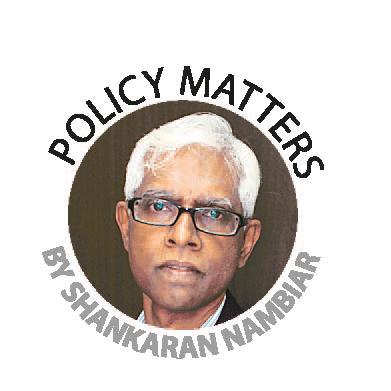THE US-China trade war is one of the major disruptive signs of present times and a worrying question is how long it will last.
First, the trade war goes beyond trade though the immediate discussions are on tariffs and trade. US President Donald Trump has cited concerns about China that include purported theft of intellectual property rights, the forced transfer of American technology, and a trade deficit that is not in the US’s favour.
Trump has taken a serious view of the US’s trade imbalance with many countries. He wants the US to have a trade surplus with all countries, something that goes runs contrary to current economic thinking, since it is against the notions of specialisation and comparative advantage.
There are other concerns that the US wants to resolve through the use of economic instruments. It is uncomfortable with China’s race in robotics, AI and advancements in telecommunications and digitalisation.
China’s capacity to reverse engineer and improve on innovations made by US companies puts China in the same place Japan was in the 1930s, when it began to use western technology, and the 1980s when it started making major inroads into these markets.
Trump perceives the US economy as being on the road to being overtaken by China. And that is why he thinks China has to be clamped.
But China is not about to be stopped; it has broader ambitions and the capacity to match its dreams of occupying centre stage in the global economy. That is why the trade war is a threatening sign.
The trade war could be symptomatic of an upcoming cold war between the US and China.
Not only can we expect attacks, counter-attacks, retaliations and counter-retaliations, but – since the issues are large and concern geo-economic power – can be expected to roll into a prolonged tussle. It would not be pessimistic to expect the conflict to be extended, stretching over a decade or more, an eventuality that takes on greater probability should Trump win a second term.
If the trade war is a watershed issue, why is Trump erratic in his responses and Xi Jinping sedate in his counter-responses? Surely, a lot of it is due to individual style. But personal tendencies do not answer the question completely.
Trump has the 2020 elections to think of. He has to quickly achieve the desired outcomes. This explains why he is aggressive and seemingly impetuous.
Xi has no elections to worry about. China has time on its side and a pliant domestic political system. Xi, understandably, has responded in a more restrained and muted manner. China can stretch the game and hope for Trump to trip or exhaust himself.
Commentators in Malaysia tend to get distracted by Trump’s antics, forgetting that he mirrors the expectations of a section of his constituency. And the fear of the American dream in decline, only to be revived by Trump’s promise to make America great again.
As this conflict drags on both superpowers may try to persuade countries to take sides. Malaysia is heavily dependent on trade with China but cannot afford to snub the US. It would be rational to take a more eclectic approach, sometimes leaning towards the US and sometimes towards China, always taking a stand based on principles and merit.
Neither can Malaysia assume that the end of the trade war is imminent nor that a declining superpower can be ignored. It should prepare itself for a long period of uncertainty.
Dr Shankaran Nambiar is author of Malaysia: At the Edge of Transformation.














